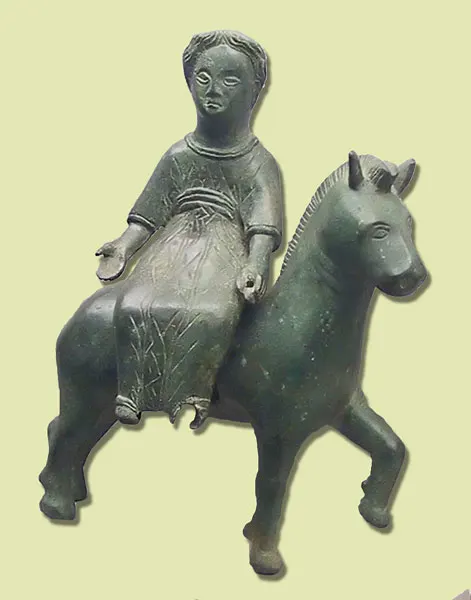I love mares. Some people hate them, but I love them. I suppose I enjoy the challenge of managing their attitude and sometimes unpredictable mood swings. Keeps it interesting! But, the point of this blog isn’t to talk about my love affair with mares, rather, I want to discuss the Great Mare, also known as Epona.
I’m sure many of you are scratching your heads and wondering who the heck I’m talking about, but don’t panic if you can’t remember a mare named Epona; she isn’t really a horse.
As a matter of fact, Epona is a goddess. A horse goddess associated with the Gauls, who were Celtic people living in a region that roughly encompassed what is now France and Belgium beginning around 450 BC. These fine folks practiced a form of animism (applying human characteristics to natural features such as streams and mountains and granting them a divine status), and worship of animals was not uncommon.
Anyway, back to Epona. Unfortunately, there’s little information about the goddess, simply because most of the Gaulish Celts’ legends have been lost over time. They did leave a wealth of inscriptions and monuments, from which most of Epona’s history is derived.
One story that has survived the ages is that Epona was born of a mare and man, Phoulonios Stellos. He chose to spurn womankind and mated with a mare. The subsequent child was named Epona by her mother, and because the giving of a name in most Celtic legends is of great importance, it implies that Epona’s mother may have been divine in nature herself, and that Epona followed in the footsteps of an earlier horse goddess.
Worshippers of Epona were mostly people whose primary job function or livelihood depended on horses, such as cavalry, scouts, dispatch riders, stable hands and grooms. Small images of Epona have been found in stables and barns all over Europe. A niche would be carved in the wall, and a small statue of the goddess, often decorated with roses, would be placed in it. Must be nice to be a goddess!
The Roman cavalry was mostly responsible for the spread of Epona’s popularity. The cavalry was formed from foreign units rather than Italian troops, so the units themselves were often quite mixed in ethnicities. The troops may not have necessarily worshipped Epona before enlisting, but they did so once they joined up because she formed part of the cultic esprit du corps of some of the Roman army units.
ADVERTISEMENT
Because there isn’t really a written history of Epona, we prove her existence with the many artifacts from the period that depicts her. She is mostly shown sitting sideways and wearing long clothing. The horse is generally walking or standing still, and the goddess is usually touching the horse with her left hand. Occasionally, she is holding a cornucopia. In some of the depictions, a foal accompanies the goddess. Epona is also shown between two or more horses, which have their heads turned to face her, in what is called the “Imperial” type.
Scholars believe that Rhiannon, an otherworldly being of British and Welsh origin, may have originated from Epona. One of the main connections between the two deities is in their role in the care and breeding of horses. It is likely, considering the many connections between them, that the lost tales of Epona were the basis of the stories of Rhiannon.
Over time, Epona also developed into a goddess linked to land fertility, rulership and possibly the Underworld.
Who wouldn’t love a mare like that?
One of web writer Coree Reuter’s favorite parts of working at The Chronicle of the Horse is adventuring up into the attic. While it’s occasionally a journey that requires a head lamp, GPS unit and dust mask, nearly 75 years of the equine industry is documented in the old issues and photographs that live above the offices, and Coree is determined to unearth the great stories of the past. Inspired by the saying: “History was written on the back of a horse,” she hopes to demystify the legends, find new ones and honor the horses who have changed the scope of everyday life with this blog.
Curious about anything in particular? Have a question or an interesting topic? Please e-mail Coree, she’d love to hear from you!















